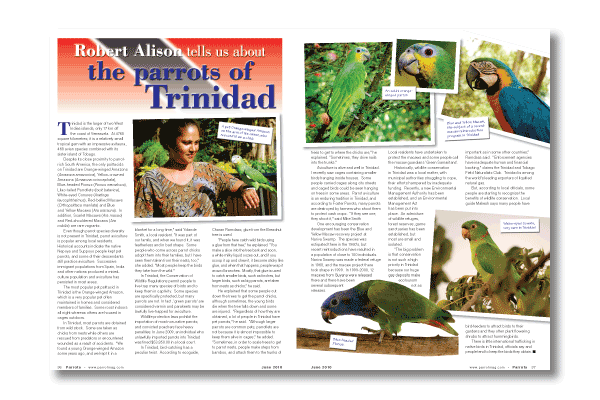 Trinidad is the larger of two West Indies islands, only 17 km off the coast of Venezuela. At 4768 square kilometres, it is a relatively small tropical gem with an impressive avifauna, 468 avian species combined with its sister island of Tobago.
Trinidad is the larger of two West Indies islands, only 17 km off the coast of Venezuela. At 4768 square kilometres, it is a relatively small tropical gem with an impressive avifauna, 468 avian species combined with its sister island of Tobago.
Despite its close proximity to parrot-rich South America, the only psittacids on Trinidad are Orange-winged Amazons (Amazona amazonica), Yellow-crowned Amazons (Amazona ocrocephala), Blue-headed Pionus (Pionus menstruus), Lilac-tailed Parrotlets (touit batavica), White-eyed Conures (Aratinga leucophthalmus), Red-bellied Macaws (Orthopsittaca manilata) and Blue and Yellow Macaws (Ara ararauna). In addition, Scarlet Macaws (Ara macao) and Red-shouldered Macaws (Ara nobilis) are rare vagrants.
Even though parrot species diversity is not present in Trinidad, parrot aviculture is popular among local residents. Historical accounts indicate the native Nepoya and Suppoyo people kept pet parrots, and some of their descendants still practice aviculture. Successive immigrant populations from Spain, India and other nations produced a mixed-culture population and aviculture has persisted in most areas.
Read more in the magazine…








Parrot Chat
Buyers Guides
Breeding articles